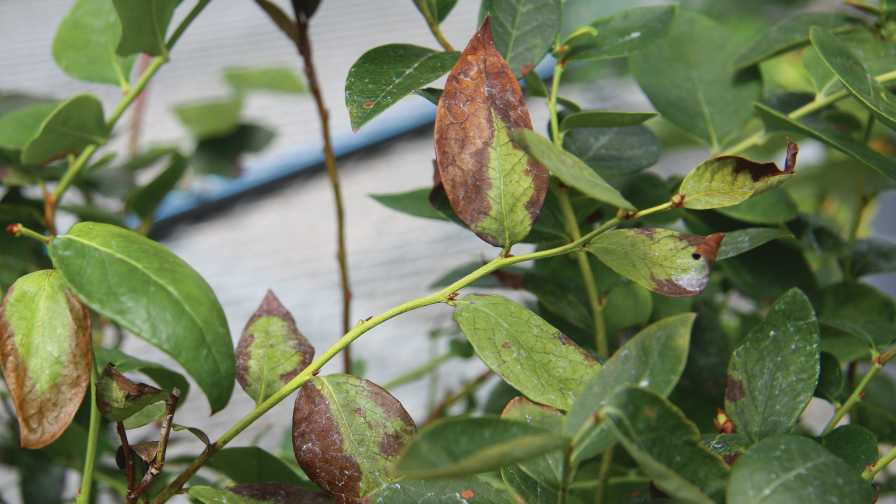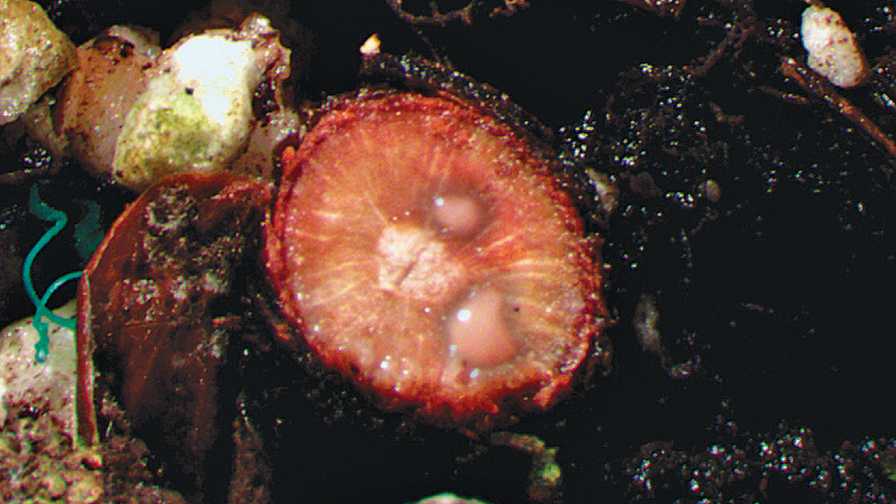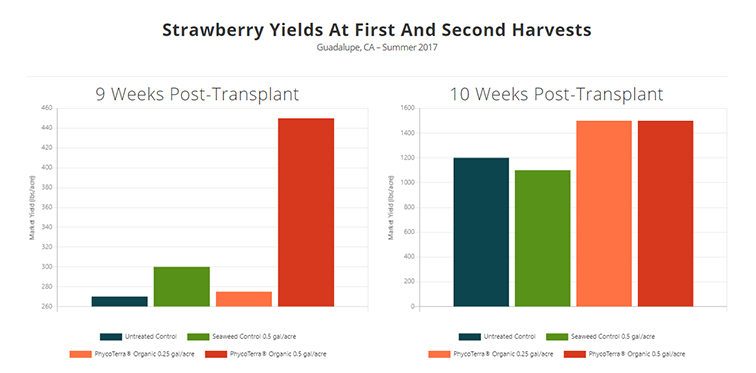Getting to the Bottom of Bacterial Wilt in Blueberries

Leaf symptoms of bacterial wilt on ‘Indigocrisp’ following inoculation.
Photo by Deanna Bayo
An old enemy to agriculture recently developed a taste for blueberry, and this isn’t the kind of market expansion strategy the Florida Blueberry Growers Association had in mind. The bacterial plant pathogen, Ralstonia solanacearum, is known to most vegetable producers as a major problem for tomato and other solanaceous crops, capable of causing a dramatic bacterial wilt. Ralstonia also infects many other plant species (more than 200 reported) that include other crops, weedy plants, and several ornamentals — both woody and herbaceous. The pathogen is tough, and there are few good management options, even for crops in Florida that have been affected for more than 100 years. This find is concerning, and many questions remain unanswered; particularly, “why now?”
Discovery Details
2016 marked the first time bacterial wilt had been diagnosed on blueberry in Florida. We’ve only been able to find one previous report of the disease on blueberry, and that was documented on a poster from a 2012 conference. That incident, which occurred in New Jersey highbush production, appears to have been isolated to a single location, variety, and year.
So far, we have isolated the pathogen from a handful of farms just after the initial outbreak continuing into 2017, and we’ve found it primarily on the variety ‘Arcadia,’ but also on others including at least one non-UF developed variety. ‘Arcadia’ is a fairly new variety release with good fungal disease tolerance as well as traits favorable for evergreen production practices. The farms where we have found the disease, so far, range from North-Central Florida down to the southern-most production in the state.
The disease was brought to UF/IFAS Extension’s attention by some of our excellent Florida producers. Two separate farms recognized this as something new at the same time. Plants had symptoms similar to bacterial scorch including prominent marginal leaf burn, but the symptoms seemed to be running down rows. One grower brought samples to the Plant Diagnostic Center in Gainesville. We didn’t find any usual suspects, so I made a field visit with UF/IFAS Horticulturist Jeff Williamson. Horticultural management was spot on, so I took more samples.
The break came when the second grower took samples to the Mid-Florida Research and Education Center in Apopka. Researcher Dave Norman (who happens to be a world-renown Ralstonia expert) processed the samples and found the pathogen. He called us up in Gainesville, and alerted us to his discovery. We also had isolated the bacterium as it turns out, but hadn’t identified it yet. (Thanks, Dave!)
Global Reach
The pathogen recently has caused major problems for rose producers in Europe, and regulated exotic strains pose risk to the U.S. potato industry. Research can identify the pathogen beyond the species level, and strain IDs are used to try to figure out where outbreaks originate from. In our case, Dave found a diverse range of strains, but not the regulated strain. These preliminary results suggest an extraordinary environmental condition may have led to the susceptibility of blueberry to strains already present on the various affected farms. What those stresses or conditions that led to disease were, we still don’t know. In the meanwhile, we are initiating research and an Extension push to make growers aware of the new foe.

That’s bacterial ooze from the crown of a rooted blueberry cutting, BTW.
Photo by Deanna Bayo
In Search of Management Methods
I’ve made several Extension presentations since the discovery and have written a few articles similar to this one to try to get the word out about the new issue and to relay the best information we have on possible management strategies. Producers on affected farms have incorporated phosphorous acid fungicides through soil drenches, or injection through drip irrigation, and so far, there have not been many new plant deaths on affected farms, or many additional positive farms. I don’t think the problem is likely to go away, but it has given us some time to begin research into the pathogen and disease cycle, host plant resistance, and other potential management strategies.
Host plant resistance is the most promising long-term prospect, and Graduate Student Deanna Bayo is currently evaluating germplasm from the UF breeding program to see if we have any resistance currently available.
We’ve had help from Patricio Munoz, a UF/IFAS Blueberry Breeder, and plan to continue to work with the breeding program looking forward. Currently, 14 UF/IFAS cultivars, and the northern highbush variety that the disease was previously found on, are being evaluated. We began the first large-scale experiment recently and have been closely monitoring the symptom development on the close-to 500 rooted cuttings.
At four weeks after inoculation, we began to see irregular yellowing of the leaf margin followed in a few days by marginal necrosis (death) and wilt of young growing shoots. The crowns of the rooted cuttings that have died so far exude bacterial ooze and characteristic streaming associated with bacterial wilt.
We have observed more pronounced symptom development and rapid death of plants of a few cultivars as compared to others, but after the data are collected, we will do the statistics to confirm real differences. With this information, we plan to use susceptible varieties to test various products for their effectiveness in protecting against this emerging disease. This also will be valuable information for the breeding program. Ultimately, Deanna’s research will inform our future extension message and management strategies.
In the end, this disease will be added to a growing list of challenges the Florida blueberry industry will overcome. Growers with additional questions can visit our UF/IFAS EDIS publication for more details or email me or Deanna.









